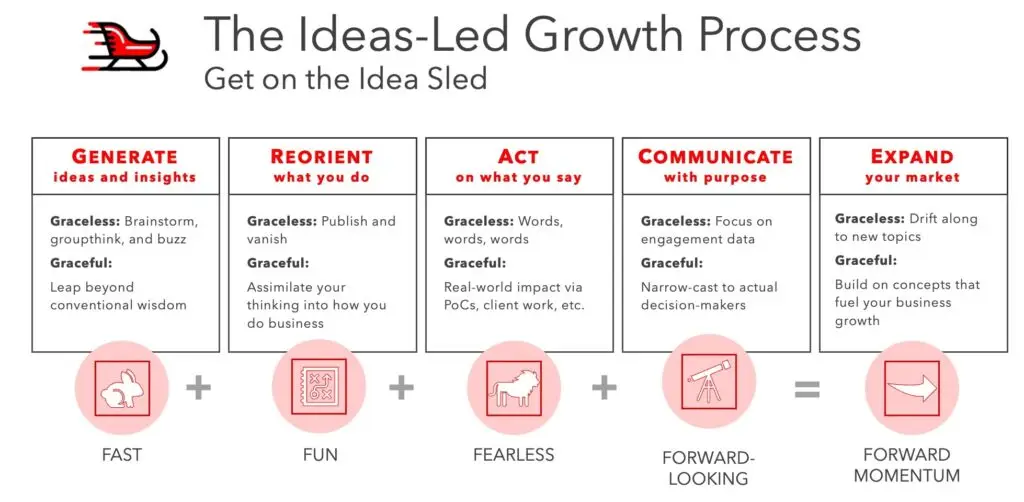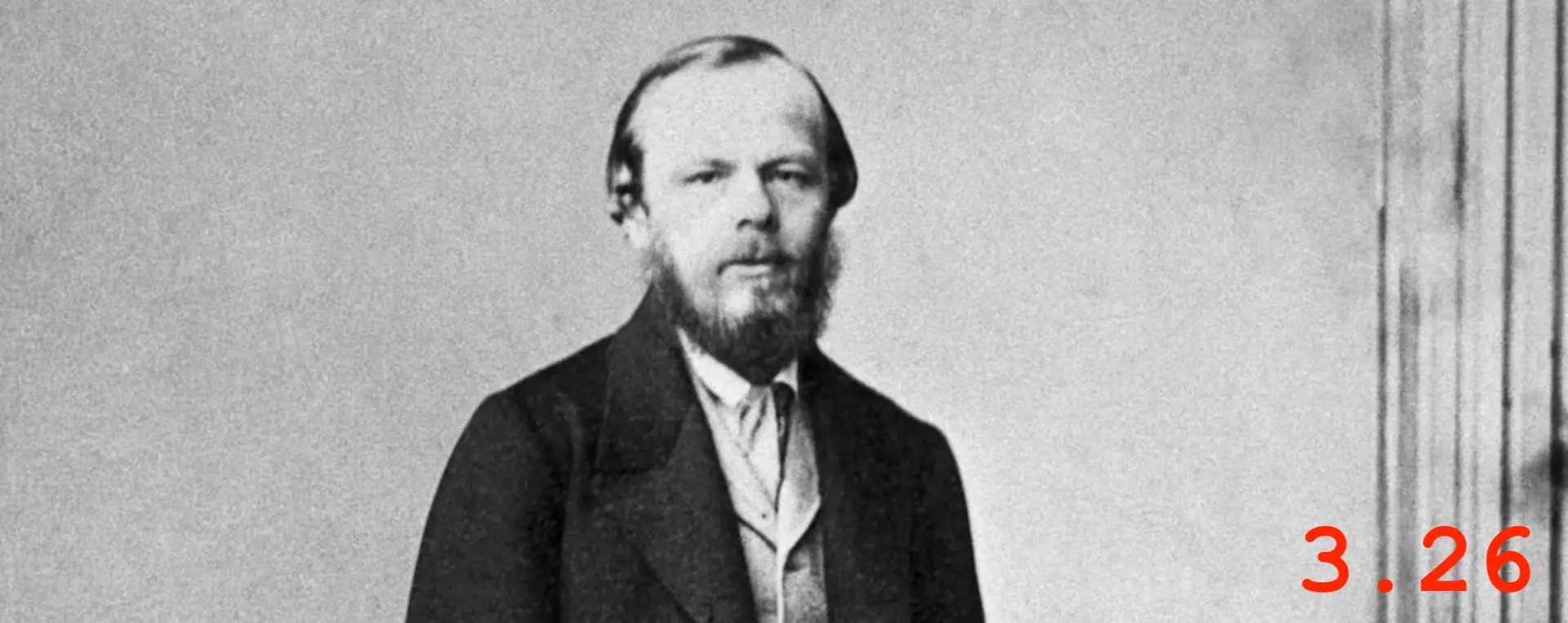Thought leadership should be fun, fast, and fearless. You tap into excitement about new ideas and advocate for something better. That’s the mindset behind The Idea Sled. Projects glide forward gracefully. It’s the momentum of commitment. This newsletter shows you how.
I apologize. Sometimes we say it for the sake of form, but when we really mean it, this phrase does something, too. An apology is an action carried out in speech. It can pass between people in a breath, but its weight changes something. It introduces a new condition. A shift in the relationship, a signal of accountability, an opening for trust to re-enter the room.
Philosophers call this a speech act. The idea has roots in earlier linguistic and philosophical work, including Ludwig Wittgenstein’s view that the meaning of language comes from how it is used, and Émile Benveniste’s exploration of performative language.
It was J.L. Austin who developed the concept more systematically. In How to Do Things with Words, Austin showed that some utterances do something just by being spoken. Saying “I resign” is the act of resigning. Saying “you’re under arrest” enacts authority through language. John Searle later expanded the theory and gave it the structure that brought it into wider philosophical and linguistic use.
Speech Act: A statement that enacts. Saying becomes a form of doing. Promises, apologies, declarations, and commitments are all examples. Their meaning is inseparable from the action they initiate.
The speech act doesn’t merely reside in what is said. It resides in the commitment and outcomes that follow.
Thought leadership, if it has any real strategic value, belongs in the same category—at an organizational level. A firm that expresses a considered position on its industry does more than publish. It sets terms. It determines and defines the risks that matter, the shifts it expects, and the priorities it holds. When done properly, it creates external market impact and internal alignment simply in the act of uttering and sharing ideas.
Language of Strategic Consequence
Some statements remain inert. They fill space, occupy slides, pad documents, create the illusion of momentum. Most press releases and far too many product materials, SEO articles, and other content marketing outputs fit this description.
But others exert force. They change decision criteria, reshape timelines, narrow focus, invite accountability. Without asking for it out loud, they demand a response. If this is the case, if this is what we say now, what else must be true?
In the context of institutional positioning, a clear point of view borne forth in articulate thought leadership has this catalytic effect. A firm that articulates its thinking with rigor begins to experience that thinking as operational pressure. It cannot publish a position and proceed as if it hasn’t. Instead, it interacts across marketing, sales, product, service, and operations. It begins to animate them as part of the culture.
This animation occurs when the role of thought leadership shifts from outward projection to inward coherence. In a sense, this use of language becomes organizational infrastructure. It begins to shape behavior. For example, the underlying ideas become a reference point for product teams refining the roadmap, for client teams recalibrating conversations, and for internal leaders reframing what excellence looks like in a given role.

And the change management dimension is central. Few firms effectively disseminate their thought leadership to internal teams, even with generic email cascades or toolkits. Fewer still close the gap between ideas and practices with honest conversations, mapped resistances, and deliberate reinforcement to move thought leadership from message to signal to system. But that should be the ultimate goal for an ideas-led organization.
When led by ideas, functional leaders treat them as guideposts for execution, and line managers work with each team member to integrate them into how people speak about and do their work.
→ Product Direction
One firm, seeking to evolve from niche provider to broader platform partner, began publishing a vision for how its client base would need to manage complexity over the next decade. The ideas went much further than the usual analyst abstractions. They pointed to gaps in tooling, blind spots in workflows, and tensions between ambition and architecture.
What began as a narrative soon became directional. Product teams across the business started using the language in standups. Roadmaps shifted to prioritize overlooked user journeys. Functions that once optimized for feature velocity began to optimize for coherence.
But instilling this change required distributed and deliberate effort. Teams were briefed on the thinking and challenged to put it to work. Internal workshops mapped what the ideas implied for each team’s work queue and longer-term strategy. Leaders were asked explicitly to speak to the vision in their own terms.
→ Sales and Client Engagement
Another institution, long seen as steady but conservative, released a thought leadership series exploring future-state scenarios for financial infrastructure. The pieces didn’t sell a product. They sold a worldview by challenging prevailing norms and anticipating a shift in how risk, speed, and scale would interact.
Instead of marketing just posting PDFs on an intranet, sales teams were brought into the thinking early on. Sales leadership treated thought leadership as part of their sales enablement stack. Reps were trained on key phrases and how to use the material to restart or reframe client conversations. Instead of qualifying needs, they began qualifying beliefs. Which prospects were already aligned with the future the firm was investing in? Which needed more exposure to the logic before a pitch made sense?
Here, too, reorientation required intention. The goal was to transform how clients think and how the firm shows up in the room. Account planning shifted. Discovery calls became more diagnostic. Success was measured not just in conversions but in the kinds of conversations that began to occur. These elevated conversations translated to faster closes and better relationships from Day One.
→ Internal Communications and Cultural Focus
A technology firm undergoing brand reinvention recognized that if its new brand and positioning remained external, the effort would stall. The leadership team elevated these activities from a project inside marketing to a full-blown operating thesis. Then, leaders began asking how the new positioning should affect the way employees experienced the company.
The reorientation process involved several layers. First, leadership narratives were adapted to echo the external message without diluting its substance. Then, monthly communications and quarterly all-hands meetings were restructured to include reflections on how teams were embodying the new direction. Templates for internal decks, onboarding sessions, and internal learning modules were rewritten to reflect the core ideas in tone and emphasis.
Crucially, managers were enlisted as communicators and advocates as part of the normal course of doing business. They were expected to know the strategic narrative, to use its language, to explain its relevance. That shift changed how employees related to the brand. The ideas became part of their daily context, showing up in conversations, shaping decisions, and informing how people explained their work to others. The message moved inward until it became instinct.
The Commitments We Make
Ultimately, a firm’s published thinking is a statement of intent. It signals what the organization takes seriously, what it’s willing to be accountable for, and where it believes value will emerge next.
When that thinking is clear, it creates traction above and beyond web and social analytics or MQLs. It’s an entirely different approach to ideas. Teams begin to shape their priorities around them. Managers adjust how they guide. Decisions from resource allocations to hiring criteria and client conversations start to follow the shape of the idea.
These changes show the work of reorientation in motion. A single concept, well-articulated and consistently reinforced, becomes structural. It settles into the foundation and begins to organize what’s built on top of it. And when that reorientation takes hold, the business starts to act in accordance with what it has declared. They show up in how people prioritize, how teams collaborate, and how leadership frames success.
Every statement leaves a trace. With intention, every act of saying carries the possibility of becoming.
Postscript: How To Measure Becoming
One obvious question follows in our data-obsessed world: if saying leads to becoming, how do you measure what’s changed? The answer is simple and, for some, uncomfortable.
You measure it by listening for stories.
In organizations shaped by strategic expression, impact shows up in human outcomes. You hear clients repeating your language before sales does. You hear employees describing the firm in ways that match its forward intent, not just its history. You see conversations shift, alliances form, and new ideas gather force as people begin acting in alignment with what was said.
Measuring in stories requires an additional cultural shift from data-driven proxies that look like objective facts to qualitative, relationship-driven assessment that puts narrative fidelity and deep affinity over engagement stats and shallow reach. In reality, giving into the temptation to default to what’s countable (views, opens, clicks, impressions, leads, etc.) leaves firms with the illusions of approximation without mapping meaning.
After all, correlation does not imply causation. A spike in traffic tells you something happened. A story tells you why it mattered. In the most coherent organizations, those stories become part of how impact is tracked, understood, and used to guide what comes next.
The firm speaks. The firm listens to its own stories and those of external stakeholders. Then, the firm adjusts and renews with a new wave of new ideas. That’s the real loop of thought leadership.

Three Grace Notes
“Next time someone tells you desire Is a trick of grammar
Tell him
If what I have is what I said I wanted
It’s not what I wanted
I know what I want
But I don’t know its name.”
—Helen DeWitt, Some Trick
“An available, consumable object is not a Thou but an It. The absent relation and attachment creates a significant poverty in world. The plethora of digital objects in particular leads to a loss of world. A screen is very poor in world and reality. Without any counterpart, without any Thou, we are caught up in ourselves.” —Byung-Chul Han, Non-things: Upheaval in the Lifeworld
“The uttering of the words is, indeed, usually a, or even the, leading incident in the performance of the act (of betting or what not), the performance of which is also the object of the utterance, but it is far from being usually, even if it is ever, the sole thing necessary if the act is to be deemed to have been performed.” —J. L. Austin, How to Do Things With Words
Note: The links above are affiliate links. I’m using them in lieu of paid subscription tiers or digital tip jars. Seems like a much more graceful way to generate financial support while sharing more thinking and writing that can guide thought leadership.




